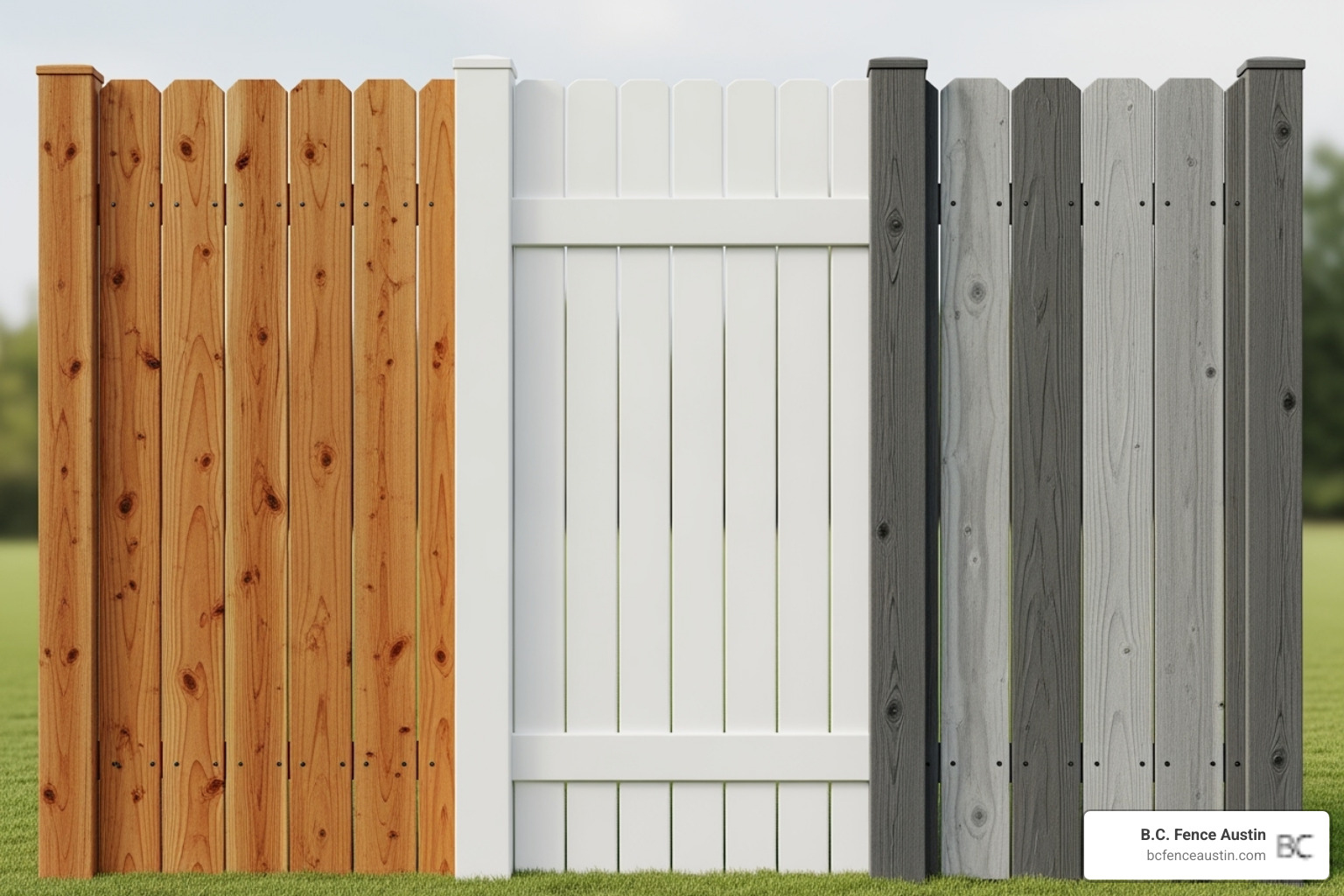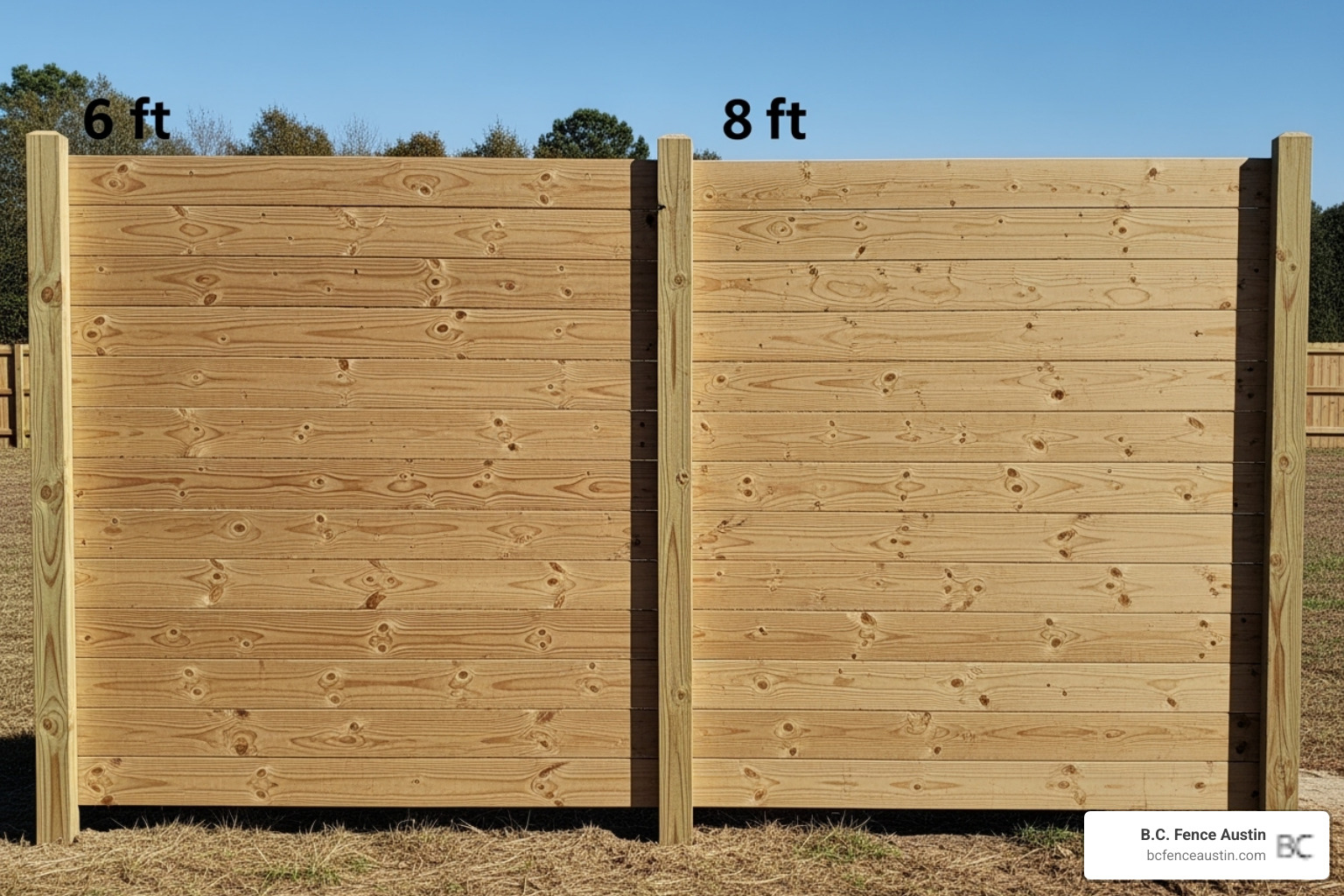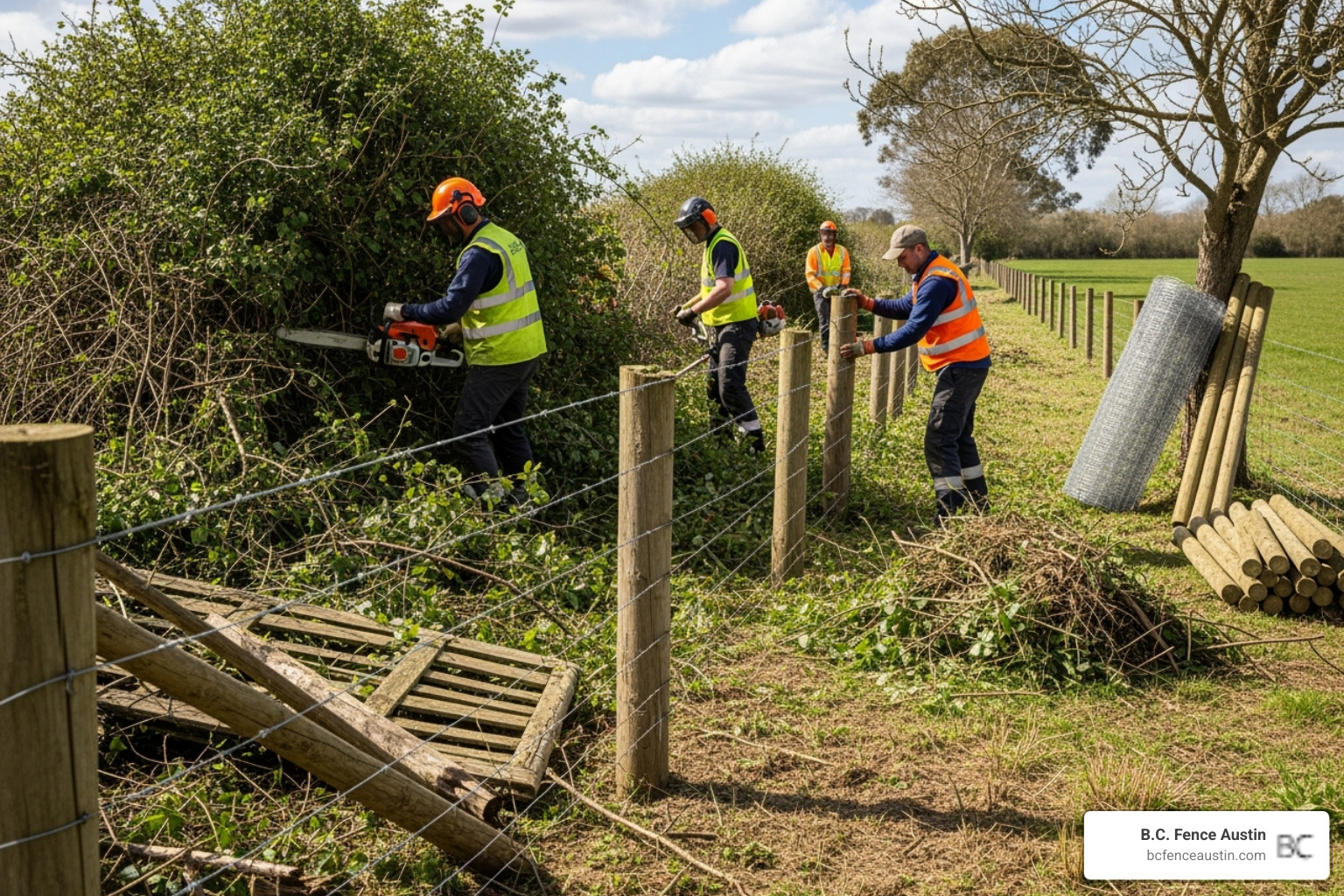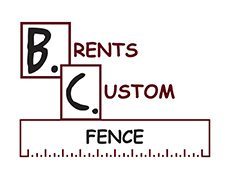Why Understanding Privacy Fence Costs Matters for Austin Homeowners

The average cost per foot to install privacy fence can vary significantly, and for most Austin homeowners, understanding why is the first step toward a successful project. The final investment depends on a wide range of factors—from the materials you choose to the unique conditions of your property.
Why do these costs vary so much? The truth is, the per-foot price is influenced by dozens of variables, such as the type of wood, the condition of your soil, and whether your yard has a slope. A standard 6-foot privacy fence can have a broad cost range depending on these specifics.
Understanding these costs isn’t just about knowing a number. It’s about making smart decisions for your family’s safety, your home’s value, and your peace of mind. When you know what drives the price, you can plan better and avoid budget surprises halfway through your project.
This guide breaks down everything that affects your privacy fence costs, from materials and labor to those hidden expenses many homeowners forget to budget for. We’ll also look at long-term value, because the cheapest fence isn’t always the smartest investment.
Understanding the Components of Your Fence’s Cost Per Foot
When you hear about the average cost per foot to install privacy fence, it’s helpful to think of it as a bundle of different expenses. It’s not just about the fence panels; it’s a combination of materials, labor, and site-specific needs that create the total investment.
We’ve helped hundreds of Austin homeowners plan their fence projects, and we’ve learned that understanding where your money goes leads to better decisions. A well-planned privacy fence improves your home in three key ways: it keeps your family secure, gives you the privacy you deserve, and boosts your property’s curb appeal.
Your fence investment includes several key parts. There are the fence materials themselves, from traditional wood to modern vinyl. Then you have labor rates for professional installation. Project complexity also matters—a straight fence on flat ground is less intensive than one on a steep slope. Finally, your property conditions, like rocky soil, can influence the installation process.
Many homeowners budget only for materials and are surprised by installation or site preparation costs. We want to help you avoid that. Knowing the full picture from day one allows you to plan properly and make choices that fit your budget and vision.
Every component plays a role in creating a fence that will serve your family for years. If you want to dive deeper into comparing different materials, check out our detailed guide on fence materials.
Key Factors That Determine the Average Cost Per Foot to Install Privacy Fence
When planning a privacy fence for your Austin home, it helps to understand what drives the final cost. The average cost per foot to install privacy fence is shaped by several important factors that work together to determine your investment.
Think of it like buying a car: the final price depends on the model, features, and options you choose. Your fence works the same way. The materials, labor, project complexity, and property conditions all play major roles in what you’ll ultimately spend. Understanding these factors upfront helps you make better choices and avoid budget surprises. For a deeper look at material options, check out our guide on fence materials.
Let’s break down the big factors that influence your fence investment.

Material Selection: The Foundation of Your Fence’s Cost
The material you choose has the biggest impact on your fence’s price. Each option offers a unique balance of character, maintenance, and longevity.
- Wood fencing is a classic choice. Pressure-treated pine is a budget-friendly starting point, while cedar and redwood are premium options known for natural beauty and durability. Learn more in our guide on Cedar vs Redwood Fence.
- Vinyl fencing is a low-maintenance alternative. While the upfront investment is higher, vinyl resists fading, cracking, and rot, requiring little more than an occasional rinse.
- Composite fencing offers the look of wood with modern durability. It resists insects and rot with minimal maintenance but comes at a higher price point.
- Chain link with privacy slats is a practical, budget-conscious solution for visual screening when aesthetics are a lower priority.
- Aluminum fencing provides a sleek, modern look with exceptional durability and almost no maintenance, placing it at the higher end of the price spectrum.
Labor & Installation: The Impact of Professional Expertise on the average cost per foot to install privacy fence
Skilled labor is a significant portion of the average cost per foot to install privacy fence. Professional installation ensures every post is set correctly and your fence meets local codes, preventing costly issues like sagging or leaning down the road.
In the Austin area, several factors can affect labor costs:
- Terrain and Soil: Slopes, uneven ground, or rocky soil (like Austin’s limestone) require specialized equipment and more intensive work, increasing installation time.
- Site Accessibility: Tight spaces or obstacles can make it harder for crews and equipment to reach the fence line, impacting efficiency and cost.
- Project Timeline: Complex layouts and challenging site conditions naturally extend the project timeline.
If you’re unsure which material suits your property, our guide on what type of fence should I get can help you weigh these practical considerations.
Fence Dimensions: How Height and Length Affect Your Budget
It’s simple: bigger fences cost more. The total height and length directly drive your final investment.
Most privacy fences are 6 feet tall, which is effective for most backyards. Opting for an 8-foot fence requires longer, stronger posts set deeper in the ground and more material per panel, which can significantly increase per-foot costs.
Linear footage is also straightforward—a longer fence line requires more materials and labor. We carefully measure your property to provide an accurate estimate, ensuring there are no surprises.

Beyond the Linear Foot: Additional Costs to Consider
When planning your fence, it’s easy to focus only on the per-linear-foot cost, but that number doesn’t tell the whole story. The “extras” can catch you by surprise if you aren’t prepared for them.
The average cost per foot to install privacy fence is like a car’s base price; it covers the essentials, but features like gates, site prep, and permits are separate line items. We believe in transparency, so let’s walk through these additional costs so you can budget for the total project. If you’re working with constraints, our guide on How to Install a Fence on a Tight Budget offers helpful strategies.
Gates, Corners, and Custom Features
Every fence needs access. Walk-through gates and larger driveway gates are priced separately because they require specialized hardware like hinges and latches. The cost is also influenced by the material and whether you choose automation. Corner posts also require extra bracing to handle stress, adding a small but necessary expense.
Custom designs like lattice tops, decorative post caps, or unique panel styles add personality but also increase material and labor costs. These touches make your fence unique. For ideas, see our list of 7 Popular Fence Designs.
Site Preparation and Old Fence Removal
Work often begins before the first new post is installed. Land clearing of brush or small trees may be needed to create a clean work area. For sloped properties, grading and leveling are essential for a stable, straight fence. Any trees or stumps in the fence line must also be removed.
If you’re replacing a fence, old fence demolition and debris disposal is part of the job. We remove the old structure, pull out the posts, and haul away all debris, leaving your property ready for its upgrade.

Permits, Surveys, and Local Regulations
Navigating local regulations is a necessary step to protect your investment. Austin has specific municipal building codes that dictate fence height, setbacks, and materials. You can review the City’s current guidance on fence permitting and standards here: City of Austin Fence Requirements. We ensure your project is built to code from the start.
If you’re in a neighborhood with a Homeowners Association (HOA), you’ll need to get approval for your project, as many have strict rules on fence styles and materials. A property line survey is also a wise investment to prevent disputes with neighbors by confirming your exact boundaries.
Finally, we always arrange for utility line marking (via 811) before any digging. This free, critical service prevents dangerous and costly accidents involving underground gas, electric, or water lines. These administrative steps ensure your project goes smoothly and safely.
Long-Term Value: Factoring in Maintenance, Lifespan, and ROI
When considering the average cost per foot to install privacy fence, it’s tempting to focus only on the upfront price. However, a fence is a long-term commitment. The smartest investment considers the total cost of ownership, including maintenance and lifespan.
The cheapest fence today might cost more in repairs and upkeep down the road. A privacy fence is an investment that can boost your property value, create a safer space for your family, and give you a backyard you’ll love. To understand why so many Austin homeowners are making this investment, check out our Top 5 Reasons to Install a Fence in Austin, Texas.
The Lifetime Cost of Your Fence: Maintenance and Durability
Different fence materials require different levels of care over time. Understanding these ongoing costs helps you make a choice you’ll be happy with for years.
- Wood fences need regular cleaning and staining or sealing every few years to protect against sun and moisture. This maintenance is key to their longevity.
- Vinyl and aluminum fences are virtually maintenance-free. They resist rot, rust, and insects, saving you significant time and money over their long lifespan. Our guide on Vinyl Fences Versus Wood Fences breaks this down further.
- Composite fencing offers a wood-like appearance with minimal upkeep, resisting insects and rot naturally.
A well-maintained wood fence can last for many years, but low-maintenance materials like vinyl, composite, and aluminum often last for decades, making them a durable choice for the Austin climate.
Return on Investment: Boosting Your Home’s Value and Appeal
A professionally installed privacy fence offers returns beyond security. It can significantly increase your home’s appeal and marketability.
Curb appeal is real. A beautiful fence makes your entire property look more polished and intentional. While an appraiser may not assign a specific dollar value to a fence, homes with fenced yards often sell faster and are more attractive to buyers, especially families with children or pets. This competitive edge is valuable in any real estate market.
Security and safety are priceless benefits. A fence creates a clear boundary and a safe, contained space for children and pets to play. Perhaps most importantly, it transforms your yard into a private oasis for relaxing and entertaining.
This expanded, usable living space changes how you experience your home every day. For more information, visit our page on Residential Fencing Austin, TX. We’re here to help you choose a fence that fits your budget, lifestyle, and long-term goals.
Frequently Asked Questions About the Average Cost Per Foot to Install Privacy Fence
We talk with homeowners every day in Austin and its surrounding areas, and we hear the same great questions time and again. Let’s tackle the most common ones.
Is a horizontal fence typically more expensive than a vertical fence?
Yes, a horizontal fence usually has a higher price tag. The reasons include:
- Design Complexity: Horizontal boards require more precision and time to ensure perfect alignment.
- Structural Requirements: They need more robust framing and support to prevent sagging over time.
- Labor Intensity: The meticulous work of leveling and securing each board takes longer than for a standard vertical fence.
How can I get an accurate estimate for my specific fence project?
The best way to get a reliable estimate is with an on-site consultation. A generic online calculator can’t account for your property’s unique variables. A professional will:
- Take professional measurements of the exact fence line.
- Assess the property for challenges like slopes, rocky soil, or obstacles.
- Discuss your preferences for materials, height, and custom features.
- Provide a detailed quote that breaks down all costs, including materials, labor, and site prep.
We always recommend comparing quotes from a few licensed and insured companies to feel confident in your choice.
Does the time of year affect fence installation costs?
It can, but materials and property conditions are still the biggest factors influencing the average cost per foot to install privacy fence.
Seasonal demand is the main variable. Spring and fall are peak seasons, so contractor schedules fill up quickly. You may find more scheduling flexibility during the off-season (late fall or winter). While heavy rain or a rare freeze can cause minor delays, our experienced crews work efficiently year-round in the Austin climate. The best time to build is ultimately what works for your schedule and budget.
Conclusion: Planning Your Austin Privacy Fence Project
We’ve covered the key factors that go into your fence project, and we hope one thing is clear: the average cost per foot to install privacy fence is about understanding the total value of your investment, not just a price tag.
From material selection and professional installation to gates and permits, each piece plays a part in creating the privacy, security, and curb appeal you’re looking for. For homeowners throughout Austin, Cedar Park, Leander, and Round Rock, a fence is an investment in your daily life and your home’s future.
Planning a fence project doesn’t have to be overwhelming. At B.C. Fence Austin, we believe in straight talk and building fences that stand the test of time—and the Texas heat. Every property is unique, whether it has a tricky slope or Austin’s famous limestone, and yours deserves a personalized approach.
The best fence is one that fits your needs, budget, and vision. The only way to know what that looks like is to have a conversation about your specific property.
Ready to turn your backyard into a private retreat? We’d love to walk your property with you and provide a clear picture of your project from start to finish. Explore your privacy fence options and get a personalized consultation with our team today. Let’s build something great together.
